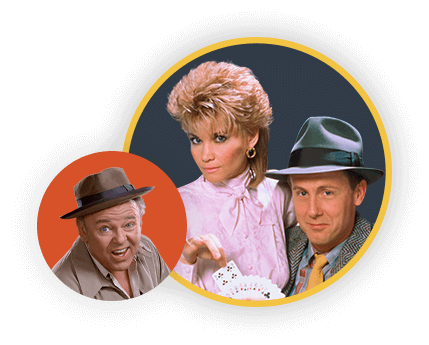Marx Toys made many of your favorite toys yet is largely forgotten today

Top image: Mears Pop Culture Auctions
In 1922, three years after founding their company, brothers Louis and David Marx were millionaires. The distributors-turned-toymakers had delivered delightful playthings to the hands of American children. Toys such as the tin, mechanical Zippo the Climbing Monkey were must-haves for kids. Marx Toys proved to be so successful, the company was Great Depression–proof. In fact, Marx saw its revenues go up during the devastating economic downturn.
By 1980, the last Marx factory had closed. Marx was history, eight years after being sold to the Quaker Oats Company. The electronic age had been the downfall of Marx, the king of the plastic age.
Like Mr. McGuire in The Graduate, Louis Marx saw the future in plastics during the 1960s and '70s. The New York–based firm had plastic molds for cars, soldiers, robots and miniature furniture. Marx churned out plastic tricycles, plastic dolls, plastic figurines. Most likely, one of these Marx wonders filled your toy chest.

The Big Wheel
Girard, Pennsylvania, was the Motor City for toddlers. The Marx factory in that Lake Erie town manufactured thousands upon thousands of Big Wheels in the 1970s. The low-rider trike was introduced in 1969, and soon there were several iterations like the Deluxe Big Wheel, the Sport Wheel, the Little Wheel and the Mini Wheel. Who can forget that distinctive sound of hollow plastic wheels crunching pavement?

Rock 'Em Sock 'Em Robots
Bam! It's the Red Rocker versus the Blue Bomber! These pugilistic robots hit stores in 1964 and continue to be a popular seller today. However, the modern versions feature smaller robots than the Marx originals.

Army Men Playsets
Tiny plastic soldiers seem so ubiquitous and generic, it's easy to forget there was a company raking in big-time green thanks to those little green army men. Marx sold bags and playsets of WWII soldiers, "Battle of the Blue and Gray" Civil War fighters, and Western figurines. There were licensed cowboy playsets for popular MeTV series like Gunsmoke, The Rifleman and Wagon Train.
Image: Wishbookweb

Disneykins
Anyone with a relative currently under the age of 10 is undoubtedly familiar with Shopkins and Tsum Tsums. The craze for tiny plastic figurines and Disney characters dates back half a century. Launched in 1961, the Disneykins line featured the pantheon of Disney idols — Mickey, Donald, Goofy, Pluto, Dumbo — and more obscure characters like Ludwig Von Drake, Toby Tortoise and Willie the Whale.
Image: Sears, 1961 / Wishbookweb

Nutty Mads
A couple years after Disneykins filled children's stocking and pockets, Marx got hip with trends and created a line of counterculture kooks somewhat akin to Rat Fink and his hot rod. Donald the Demon, seen here, looked like Donald Duck turning into the Hulk. Naturally, you would have to collect his buddies like Rockin' Ronnie and Suburban Sydney.
Image: gasolinealleyantiques via eBay

Big Loo
For those unfamiliar with this bullet-headed 'bot, the graphic does not do justice to the massive size of this thing. Big Loo practically stood face to face with little kids, who could blow on the whistle at the back of his head, shoot missles from his feet, fire projectiles from his arm and squirt water from his chest. Big Loo was the ultimate get for Christmas '63.
Image: zombie7.com

Great Garloo
Before Big Loo came down from the moon, there was the equally formidable Great Garloo. "Almost two-feet tall," Garloo was steered by a battery operated control.
Image: Marx, 1961 / TCMHitchhiker via YouTube

Little Hostess Doll Furniture
Toilets may not have been allowed on television, but there was no standard against selling them to kids. This "Commode" was just one of many teeny household items Marx sold to furnish dollhouses. Little Hostess was the Ikea for dollhouses.
Image: LaMeow Vintage via Etsy




